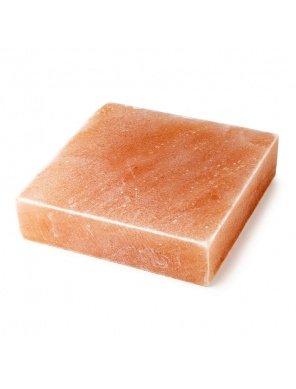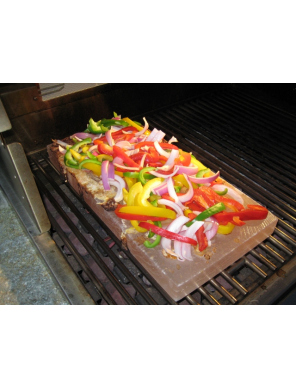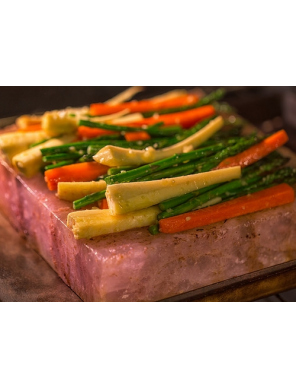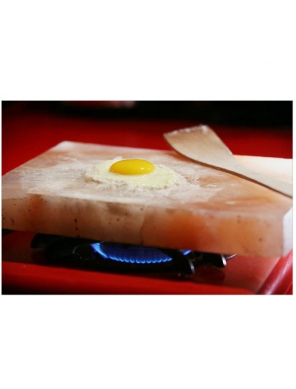Products
- Ayurvedic tea
- Indian teas
- Supplements
- Oils and drinks for health
- Facial Care
- For Skin
- Dental care
- For personal hygiene
- Sport and Yoga
- For Hair Health
- For massage
- Healthcare
- For Women
- Supplements for Men
- Aromatherapy Essential Oil
- Incense sticks
- Indian Food
- Vegan
- Superfoods
- For meditation
- For home
- New Products
- Specials
- Ayurvedic Herbs
- Wholesale
- Gifts and Kits
Browser notifications:
Himalayan Salt Block Cooking plate
Table Himalayan salt lamp for good health
Sorry, product currently is not available.
Himalayan salt blocks, plates, bricks, and platters can be used for sautéing, grilling, chilling, curing, baking, presenting, salting, bathing, building, and contemplating.
Healthy, beautiful, tasty! For gome and restaurants!
Size: 300 x 200 x 50mm.
Weight: 6.5 - 7 kg.
Heating a Salt Block
Be sure the block is completely dry. If used previously, the block should have rested for at least 24 hours. Himalayan salt blocks like to be pampered, especially at first. So, as a rule, be especially careful the first few times you heat up your salt plate. The first few times you heat up your salt block, fissures and cracks will appear, and the color may change from its original pink to a whiter color. This is normal. However, after successive uses, you may find that the salt block regains some of its original hue, largely as a result of washing.
For a Gas Range: Put the your salt block on the stove top. Set heat to low, give the block at least 15 minutes to heat up. You may notice moisture accumulating at the edges. As the salt block heats, this will evaporate off. The slower you do this, the better. Allow more time for larger plates, especially 9x9x2 inches and larger. Increase the heat slowly – low-medium for 15 minutes, and then medium-high for 15 minutes. If extremely hot sauté temperatures are desired, increase flame to full high for another 5 to 10 minutes.
For an Electric Range: If heating on the stovetop, select a circular ring of metal, such as a tart pan with a pop out bottom, pastry ring, or wok ring, and place it on the burner. Place the salt block on top of the ring. Place a circular ring of metal such as a tart pan with a pop-out bottom to create a small air gap between the heating element and the block. Once set up, heat similarly to a gas range.
For a Grill: Place your salt block on the grate. If using a charcoal grill, keep the coals to one side and place the block on the other side, to expose it to less direct heat. If using a gas grill, start the heat on low as you would with a gas range. Increase heat slowly until the block is ready to use, as described in the gas range instructions.
For an Oven: We do not recommend using an oven to heat your salt block, as damage to your salt block and/or your oven may result. If you would like to bake on your salt plate, heat it as described above to at least three hundred degrees, and then move it into a hot oven.
How do you know when your block is ready to use? If you have a laser thermometer, the block should be at least 500 degrees F. If you don’t, simply sprinkle a few drops of water on the block. If they sizzle away instantly, the block should be hot enough.
Cooking on a Salt Block
Every type of food will react uniquely to your salt block. The effect of the salt on the food will depend on a variety of factors - moisture, fat content, thickness, and the temperature of the block. Moisture in the food will pick up salt faster, while fat will repel the salt. If your food is too salty, apply a thin layer of oil to the block.
Foods that cook quickly usually work best, so make sure pieces are cut to an appropriate thickness and that the block is hot enough. Cooking on a salt block that hasn’t been heated high enough will not only over-salt your food, but it will also degrade your block much faster.
Salt blocks turn opaque when heated, and may develop fissures or even large cracks. They may also take on color from the proteins cooked on it. Don’t get upset by the behavior of your salt block. Salt is a complicated, wily, unpredictable substance. That is what gives it much of its charm.
Keep the block’s ‘top’ and ‘bottom’ the same each use so that you sear food on the same side for the life of the block. When you flip it, fissures that have formed can become more pronounced.
Caring for a Salt Block
Cleaning: If hot, allow your block to cool completely first. Moisten the salt block with a damp sponge (do not use soap). Scrub with a soft brush or green scouring pad to remove any stuck matter, and wipe clean with the sponge. Try to keep the block as dry as possible – the less water the better. Repeat until the block is free of any cooked on food. Tamp dry with a paper towel or clean cloth, and set on a drying rack. This process removes only a very thin layer of the salt and preserves a relatively smooth surface.
Treated with care, a large salt block can provide dozens of uses. The powerful antimicrobial properties of the salt insure that it is always proper and ready for future use, with no need for detergents.
Storing: Store in any location where humidity is at a minimum. I keep many of mine on the windowsill. If you live in a humid climate, wrap the block in a towel and put in the cupboard.
10 Reasons to Own A Himalayan Salt Block & How To Use It
The Himalayan salt block is catching on and for good reason. Not only do these colorful prehistoric crystals make healthier, tastier and more interesting meals, they’re also just darn pretty to look at! Not enough, you say? Here are our top 10 reasons that the Himalayan pink salt block is a must-have natural health tool that everyone needs in their kitchen.
1. Adds Healthy Minerals To Food
Cooking on a pink salt block naturally imparts the incredible health benefits of Himalayan pink salt into your food. Such health benefits include balancing your body’s pH, stabilizing hydration levels, improving digestion and reducing acid reflux. Of course, the amount of salt that is absorbed depends on a number of factors – moisture level, thickness and oil content of the food being prepared, as well as the temperature of the block being a few of the major determinants.
2. More Complex Taste Than Table Salt
In addition to NaCl (plain old table salt) Himalayan pink salt contains over 80 trace minerals and other elements. Not only does this make HPS better for your health, it also has a much more complex flavor. Meals prepared on a Himalayan salt block will take on some of that complexity, turning familiar foods into a new and interesting experience.
3. A Hint of Salt, Not A Lot
Himalayan pink salt crystals have very low porosity and minimal moisture retention. Because of these two traits, HPS won’t immediately upon contact transform food into an unbearable salty mess. Instead, your pink salt block will impart just a hint of its very interesting salt flavor into your food.
4. Naturally Anti-Microbial Surface
Unlike other food-preparation and cooking surfaces, you’ll never have to worry about germs on a Himalayan pink salt block. This is also due to the low porosity and moisture retention of the salt which creates a naturally anti-microbial environment.
5. Extreme Temperature Resistance
In order to prevent cracking of the surface, salt blocks must be heated slowly (no more than 100 ºC per 15 minutes.) That said, Himalayan pink salt also has extreme temperature resistance with a melting point of just over 800 C making it excellent for high-heat cooking! Just be sure to have a good solid salt block holder for safe carrying of your super-hot HPS block.
6. Superior Heat Distribution
Due to the crystalline structure of Himalayan pink salt, heat spreads evenly through the entire block instead of radiating out from the middle and cooling toward the edges. Food prepared on the block will cook at the same pace whether it be in exact center, in a corner or anywhere in between.
7. Holds Temperature Longer
Also because of its crystalline structure, Himalayan pink salt blocks hold their temperature – whether it be hot or cold – longer than other cooking and serving surfaces. This means you won’t have to worry about food prepared on your salt block getting cold or too warm while you finish up any accompanying dishes.
8. Use Heated or Chilled
While most of us probably got our salt blocks with the idea to cook food on them, some of the most interesting dishes you will prepare (and serve!) on your block are those best served cold.
If you’re anything like me and you love sashimi, the pink salt block will be your new best friend. Imagine serving sake, hamachi and maguro arranged artfully on a chilled pink salt block. Your friends will be talking about it for months!
9. Food Cures Through Contact
Raw foods like sashimi will actually begin to cure the longer they rest on the salt block. This is fascinating to watch for both children and adults!
10. Blocks Double As Serving Platters
These blocks are so beautiful and intriguing that it is almost impossible to not use them as serving platters.
Himalayan Salt Block Cooking plate
Healthy, beautiful, tasty! For gome and restaurants!
Size: 300 x 200 x 50mm.
Weight: 6.5 - 7 kg.
Heating a Salt Block
Be sure the block is completely dry. If used previously, the block should have rested for at least 24 hours. Himalayan salt blocks like to be pampered, especially at first. So, as a rule, be especially careful the first few times you heat up your salt plate. The first few times you heat up your salt block, fissures and cracks will appear, and the color may change from its original pink to a whiter color. This is normal. However, after successive uses, you may find that the salt block regains some of its original hue, largely as a result of washing.
For a Gas Range: Put the your salt block on the stove top. Set heat to low, give the block at least 15 minutes to heat up. You may notice moisture accumulating at the edges. As the salt block heats, this will evaporate off. The slower you do this, the better. Allow more time for larger plates, especially 9x9x2 inches and larger. Increase the heat slowly – low-medium for 15 minutes, and then medium-high for 15 minutes. If extremely hot sauté temperatures are desired, increase flame to full high for another 5 to 10 minutes.
For an Electric Range: If heating on the stovetop, select a circular ring of metal, such as a tart pan with a pop out bottom, pastry ring, or wok ring, and place it on the burner. Place the salt block on top of the ring. Place a circular ring of metal such as a tart pan with a pop-out bottom to create a small air gap between the heating element and the block. Once set up, heat similarly to a gas range.
For a Grill: Place your salt block on the grate. If using a charcoal grill, keep the coals to one side and place the block on the other side, to expose it to less direct heat. If using a gas grill, start the heat on low as you would with a gas range. Increase heat slowly until the block is ready to use, as described in the gas range instructions.
For an Oven: We do not recommend using an oven to heat your salt block, as damage to your salt block and/or your oven may result. If you would like to bake on your salt plate, heat it as described above to at least three hundred degrees, and then move it into a hot oven.
How do you know when your block is ready to use? If you have a laser thermometer, the block should be at least 500 degrees F. If you don’t, simply sprinkle a few drops of water on the block. If they sizzle away instantly, the block should be hot enough.
Cooking on a Salt Block
Every type of food will react uniquely to your salt block. The effect of the salt on the food will depend on a variety of factors - moisture, fat content, thickness, and the temperature of the block. Moisture in the food will pick up salt faster, while fat will repel the salt. If your food is too salty, apply a thin layer of oil to the block.
Foods that cook quickly usually work best, so make sure pieces are cut to an appropriate thickness and that the block is hot enough. Cooking on a salt block that hasn’t been heated high enough will not only over-salt your food, but it will also degrade your block much faster.
Salt blocks turn opaque when heated, and may develop fissures or even large cracks. They may also take on color from the proteins cooked on it. Don’t get upset by the behavior of your salt block. Salt is a complicated, wily, unpredictable substance. That is what gives it much of its charm.
Keep the block’s ‘top’ and ‘bottom’ the same each use so that you sear food on the same side for the life of the block. When you flip it, fissures that have formed can become more pronounced.
Caring for a Salt Block
Cleaning: If hot, allow your block to cool completely first. Moisten the salt block with a damp sponge (do not use soap). Scrub with a soft brush or green scouring pad to remove any stuck matter, and wipe clean with the sponge. Try to keep the block as dry as possible – the less water the better. Repeat until the block is free of any cooked on food. Tamp dry with a paper towel or clean cloth, and set on a drying rack. This process removes only a very thin layer of the salt and preserves a relatively smooth surface.
Treated with care, a large salt block can provide dozens of uses. The powerful antimicrobial properties of the salt insure that it is always proper and ready for future use, with no need for detergents.
Storing: Store in any location where humidity is at a minimum. I keep many of mine on the windowsill. If you live in a humid climate, wrap the block in a towel and put in the cupboard.
10 Reasons to Own A Himalayan Salt Block & How To Use It
The Himalayan salt block is catching on and for good reason. Not only do these colorful prehistoric crystals make healthier, tastier and more interesting meals, they’re also just darn pretty to look at! Not enough, you say? Here are our top 10 reasons that the Himalayan pink salt block is a must-have natural health tool that everyone needs in their kitchen.
1. Adds Healthy Minerals To Food
Cooking on a pink salt block naturally imparts the incredible health benefits of Himalayan pink salt into your food. Such health benefits include balancing your body’s pH, stabilizing hydration levels, improving digestion and reducing acid reflux. Of course, the amount of salt that is absorbed depends on a number of factors – moisture level, thickness and oil content of the food being prepared, as well as the temperature of the block being a few of the major determinants.
2. More Complex Taste Than Table Salt
In addition to NaCl (plain old table salt) Himalayan pink salt contains over 80 trace minerals and other elements. Not only does this make HPS better for your health, it also has a much more complex flavor. Meals prepared on a Himalayan salt block will take on some of that complexity, turning familiar foods into a new and interesting experience.
3. A Hint of Salt, Not A Lot
Himalayan pink salt crystals have very low porosity and minimal moisture retention. Because of these two traits, HPS won’t immediately upon contact transform food into an unbearable salty mess. Instead, your pink salt block will impart just a hint of its very interesting salt flavor into your food.
4. Naturally Anti-Microbial Surface
Unlike other food-preparation and cooking surfaces, you’ll never have to worry about germs on a Himalayan pink salt block. This is also due to the low porosity and moisture retention of the salt which creates a naturally anti-microbial environment.
5. Extreme Temperature Resistance
In order to prevent cracking of the surface, salt blocks must be heated slowly (no more than 100 ºC per 15 minutes.) That said, Himalayan pink salt also has extreme temperature resistance with a melting point of just over 800 C making it excellent for high-heat cooking! Just be sure to have a good solid salt block holder for safe carrying of your super-hot HPS block.
6. Superior Heat Distribution
Due to the crystalline structure of Himalayan pink salt, heat spreads evenly through the entire block instead of radiating out from the middle and cooling toward the edges. Food prepared on the block will cook at the same pace whether it be in exact center, in a corner or anywhere in between.
7. Holds Temperature Longer
Also because of its crystalline structure, Himalayan pink salt blocks hold their temperature – whether it be hot or cold – longer than other cooking and serving surfaces. This means you won’t have to worry about food prepared on your salt block getting cold or too warm while you finish up any accompanying dishes.
8. Use Heated or Chilled
While most of us probably got our salt blocks with the idea to cook food on them, some of the most interesting dishes you will prepare (and serve!) on your block are those best served cold.
If you’re anything like me and you love sashimi, the pink salt block will be your new best friend. Imagine serving sake, hamachi and maguro arranged artfully on a chilled pink salt block. Your friends will be talking about it for months!
9. Food Cures Through Contact
Raw foods like sashimi will actually begin to cure the longer they rest on the salt block. This is fascinating to watch for both children and adults!
10. Blocks Double As Serving Platters
These blocks are so beautiful and intriguing that it is almost impossible to not use them as serving platters.
Himalayan Salt Block Cooking plate
Also bought
Top sellers
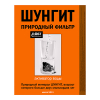 Shungite 500g
6.90€
Natural mineral - water conditioning
Shungite 500g
6.90€
Natural mineral - water conditioning
 INDIAN SOAPNUT POWDER
9.30€
Natural vegetable detergent, eco wash for all types of fabric
INDIAN SOAPNUT POWDER
9.30€
Natural vegetable detergent, eco wash for all types of fabric
 Oil Burner EDEN ROUND COLOR
7.90€
Round Ceramic Oil Burner with Feet
Oil Burner EDEN ROUND COLOR
7.90€
Round Ceramic Oil Burner with Feet
This item has been added to cart.






